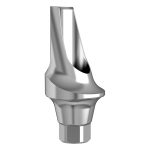When young ones experience fleeting dental pain arising from extractions or toothaches, the prescription of opioids is discouraged. Instead, the preferable approach involves addressing these sensations using readily available over-the-counter remedies like ibuprofen and acetaminophen, as outlined in novel recommendations.
The compendium that elaborates strategies for managing dental pain in children gained the official endorsement of the American Dental Association (ADA). This comprehensive directive, the fruit of collaborative efforts by the ADA Science & Research Institute in Chicago, the University of Pittsburgh School of Dental Medicine, and the Center for Integrative Global Oral Health at the University of Pennsylvania School of Dental Medicine, is primed to revolutionize pediatric pain relief.
These guidelines extend their purview to encompass youngsters aged below 12 years.
Dr. Paul Moore, distinguished author of these guidelines and an esteemed professor emeritus at the University of Pittsburgh’s School of Dental Medicine, affirms, “While the prescription of opioids to pediatric patients has markedly diminished, this guideline ensures that both dental practitioners and parents possess empirically derived suggestions to ascertain the most suitable approach for managing dental discomfort.”
Dr. Moore continues, “Parents and guardians can take solace in the fact that the pharmacopeia offers abundantly accessible medications, devoid of any potential for misuse, such as acetaminophen or ibuprofen. These options stand as safe and efficacious solutions to aid their progeny in discovering respite from fleeting dental distress,” as delineated in an official press release by the ADA.
This set of guidelines dovetails seamlessly with recommendations issued by the U.S. Food and Drug Administration (FDA) in 2017, wherein the use of codeine and tramadol in children aged under 12 was expressly cautioned against.
The panel of experts behind these guidelines contends that when utilized in adherence to prescribed regimens, acetaminophen in isolation, non-steroidal anti-inflammatory drugs (NSAIDs) on their own, or the synergy between acetaminophen and NSAIDs like ibuprofen, can capably and effectively alleviate a child’s discomfort subsequent to tooth extraction or during bouts of toothache, when immediate dental care isn’t immediately accessible.
The stipulated dosages may diverge from those enumerated on the medication packaging, yet when judiciously administered as per a dentist’s or other healthcare provider’s instructions, the likelihood of adverse effects on children stemming from these medications remains minimal.
In 2020, the FDA bestowed upon the University of Pittsburgh and the ADA’s Science & Research Institute a substantial grant of $1.5 million, spanning three years, for the development of a clinical practice guideline targeting acute pain in children, adolescents, and adults.
Dr. Patrizia Cavazzoni, the esteemed director of the FDA Center for Drug Evaluation and Research, lauds this clinical prescribing guideline as a pivotal stride towards fostering appropriate treatment for acute dental pain in pediatric patients. She emphasizes the impact of this guidance, stating, “This counsel not only facilitates the improved management of such pain but also acts as a deterrent against the superfluous prescription of medications prone to abuse, including opioids,” as conveyed in the aforementioned release.



